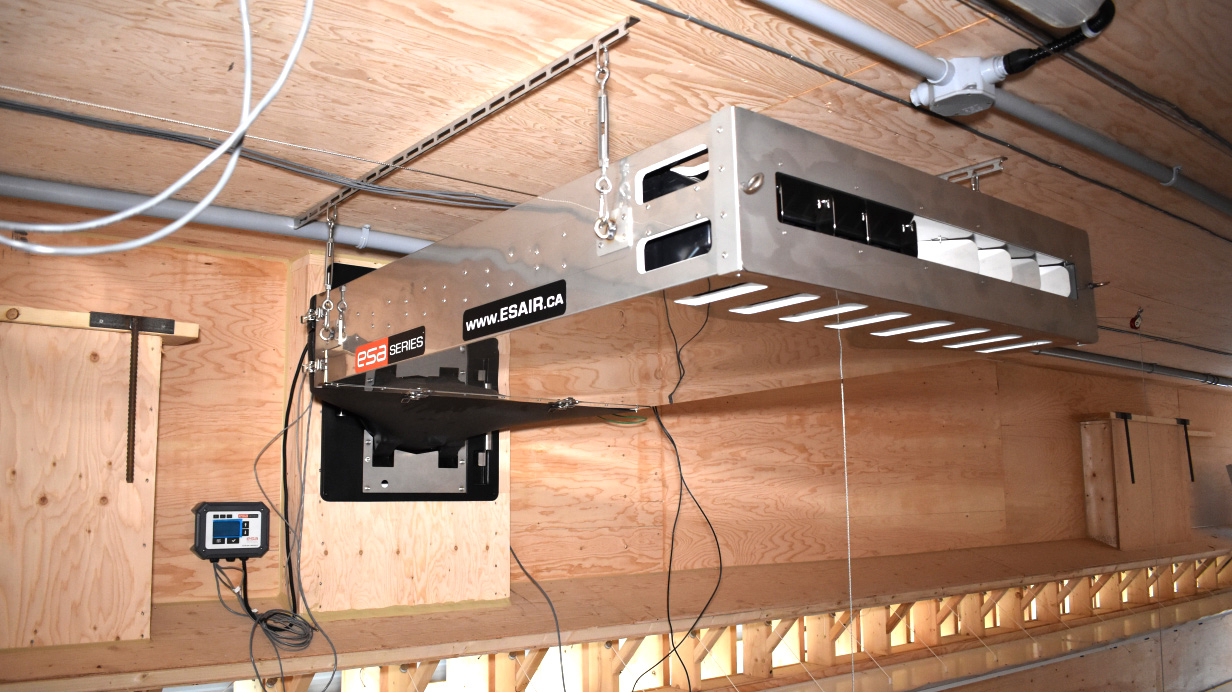Results: Study on the use of heat recovery ventilators
More and more poultry farmers are installing heat recovery ventilators (HRVs) in their chicken farm. Thanks to a study recently conducted by Sollio Agriculture in collaboration with ESA Series, we can now confirm that the use of these devices in poultry farming leads to notably improved results.
It has been demonstrated that the use of HRVs in poultry farming not only reduces the cost of heating but also heats the cold air from outside before it reaches the chickens inside. HRVs also help better manage relative humidity and maintain litter quality, which improves the chickens’ immediate environment and, ultimately, their zootechnical performance.
In poultry farming, HRVs are particularly well suited to starter chicks, which require high temperatures and therefore, more heating. HRVs are also useful in the low temperatures of our Canadian winters.
HRVs ensure a building’s baseline ventilation, so they are usually installed at one of the first levels of ventilation. When HRVs are properly placed and calibrated, the air inlet can be fully closed during chick starting. That’s why, when choosing and installing an HRV, it’s important to think about how it will distribute the air, so that you can integrate it properly with your existing heating system.
Results of the study conducted in collaboration with ESA Series
In collaboration with ESA Series, Sollio Agriculture was able to test the use of HRV technology in poultry farming for a period of roughly 18 months, on 11 different lots of chickens.
The study was conducted in a research and development building that allowed us to compare HRV technology with conventional practices. Performance was measured separately in multiple areas:
Heating
Air quality
Feed conversion
Gain
Fatalities
During the testing, we were also able to validate the devices’ ease of use and maintenance.
The results clearly show a notable improvement: we observed better feed conversion (– 0.02 kg feed/kg gain), increased weight in fully grown chickens (0.4 g/bird) and a decreased cost of heating (– 0.6 ¢/bird). These improvements mean a return on investment of 4.9 years, based on conservative estimates accounting for the installation, maintenance, cleaning and subsidies provided during the study.
For those interested in sustainable development and animal welfare, HRV technology is just common sense—and many farmers will be able to benefit.
This study was made possible by the collaboration of ESA, test farm employee Benoît Mathieu and Sollio Agriculture researcher Annie Pomerleau.
Source: This article was originally published in French in the May–June 2021 issue of Coopérateur magazine.



